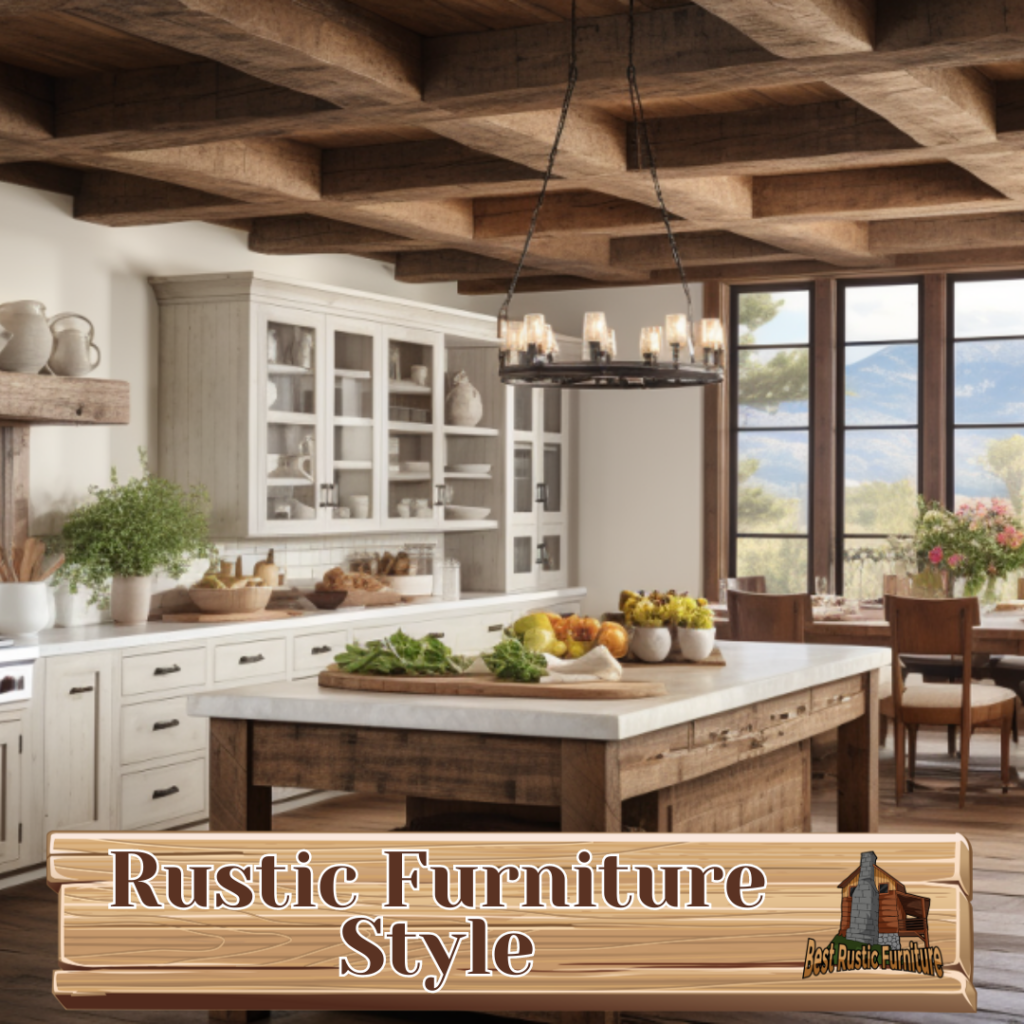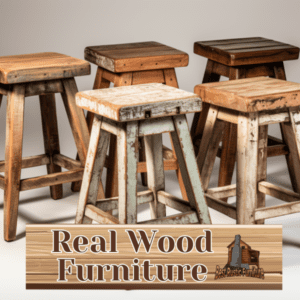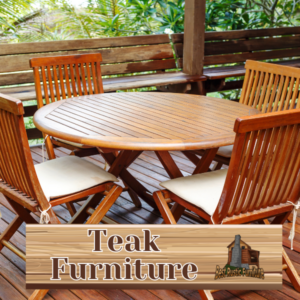
Rustic Furniture Style is a popular design aesthetic that brings a warm and cozy feel to any space. It is characterized by its natural and rugged appeal, blending elements of nature with handcrafted finishes. Understanding the essence of rustic furniture style will help you create a charming and inviting atmosphere in your home. When defining rustic furniture style, it is important to consider its key characteristics such as the use of natural materials, handcrafted and distressed finishes, and organic shapes. The history of rustic furniture style traces back to its origins in traditional crafts and has evolved in popularity over time.
Different types of rustic furniture, such as log furniture, barnwood furniture, Adirondack furniture, and southwestern furniture, offer unique options for adding rustic charm to your space. Decorating with rustic furniture can enhance the ambiance of various rooms, including living rooms, bedrooms, and dining areas, by infusing them with rustic charm and warmth.
To maintain the beauty and longevity of rustic furniture, it is important to follow proper care and maintenance practices. This includes regular cleaning and dusting, preventing damage and wear, and occasional refinishing and restoration when needed. By understanding the essence of rustic furniture style, exploring its history and characteristics, and following maintenance tips, you can create a beautiful rustic-inspired space that exudes charm and comfort.
Key takeaways:
- Rustic Furniture Style is characterized by natural materials: Rustic furniture style incorporates natural materials such as wood, stone, and metal, adding a warm and organic feel to any space.
- Handcrafted and Distressed Finishes: Rustic furniture often features handcrafted details and distressed finishes, giving it a unique and aged appearance that adds charm and character to a room.
- Rustic Furniture Style is versatile: Rustic furniture can be incorporated into various living spaces, from living rooms to bedrooms and dining areas, creating a cozy and inviting atmosphere with a touch of nature-inspired elegance.
What Is Rustic Furniture Style?
Rustic furniture style is a design aesthetic that embraces natural elements and a simple, earthy feel. It is characterized by its use of raw materials, such as wood and stone, and its emphasis on imperfections and craftsmanship. Rustic furniture often features distressed finishes and warm, earthy tones. This style is popular for creating a cozy and inviting atmosphere in homes or cabins. Whether it’s a weathered barnwood dining table or a hand-carved wooden bed frame, rustic furniture brings a touch of warmth and nature into any space.
What Defines Rustic Furniture Style?
Rustic furniture style is defined by its natural and simplistic design elements. What Defines Rustic Furniture Style? It embraces the use of natural materials and textures, such as wood, stone, and wrought iron. Handcrafted and distressed finishes add to its charm and authenticity. The furniture often features organic shapes and simple lines, reflecting a connection to nature. Rustic furniture can be categorized into various types, including log furniture, barnwood furniture, Adirondack furniture, and southwestern furniture. Its versatility allows it to be used in various areas of the home, from living rooms to bedrooms and dining areas. Rustic furniture style is characterized by its timeless and rugged appeal.
What Are the Characteristics of Rustic Furniture Style?
What Are the Characteristics of Rustic Furniture Style?
- Natural materials: Rustic furniture is typically crafted from natural materials like wood, stone, and metal.
- Distressed finishes: The furniture often features finishes that mimic the look of wear and tear, adding to its rustic charm.
- Simple and organic shapes: Rustic furniture tends to have clean lines and natural shapes, avoiding ornate detailing.
- Warm and earthy colors: The color palette of rustic furniture leans towards warm and earthy tones, such as browns, greens, and neutrals.
- Handcrafted details: The furniture often showcases handcrafted details, showcasing the craftsmanship and artistry of the maker.
Pro-tip: To enhance the rustic feel, incorporate elements like vintage textiles, natural textures, and cozy lighting into your space.
History of Rustic Furniture Style
Discover the captivating journey behind the rustic furniture style in this exploration of its history. From the humble beginnings of rustic furniture to its evolution into a beloved design aesthetic, we’ll delve into the origins, the influences of traditional crafts, and the widespread popularity of this timeless style. Prepare to be enchanted by the intriguing tales and fascinating facts that have shaped the rich history of rustic furniture.
Origins of Rustic Furniture
The origins of rustic furniture can be traced back to early settlers and pioneers who used their practical skills to craft furniture from natural materials found in their surroundings. This style emerged out of necessity, as these early craftsmen had limited resources and tools. They would repurpose logs, barnwood, and other materials to create functional and durable pieces. Over time, rustic furniture evolved and gained popularity, with traditional crafts and techniques influencing its development. Today, rustic furniture continues to be appreciated for its simplicity, organic shapes, and connection to nature. Its origins reflect the resourcefulness and ingenuity of those who created it.
Influence of Traditional Crafts
Traditional crafts have exerted a significant influence on the development of the rustic furniture style. These crafts have played a major role in shaping the techniques and designs utilized in crafting rustic furniture. Here are several ways in which traditional crafts have influenced this style:
- Woodworking: The art of woodworking, including traditional techniques such as mortise and tenon joinery, hand carving, and dovetail joints, is frequently employed in the creation of rustic furniture.
- Weaving: Traditional weaving techniques are incorporated into the making of rustic furniture pieces with woven elements, such as seatbacks and decorative accents.
- Blacksmithing: Traditional blacksmithing techniques have inspired the use of metalwork in rustic furniture, evident in details like hand-forged iron hardware or decorative accents.
- Basketry: Techniques employed in basket weaving have influenced the integration of natural fibers and woven elements in the design of rustic furniture.
The incorporation of traditional crafts into rustic furniture adds an authentic touch and pays homage to the rich heritage of handmade craftsmanship. These influences contribute to the distinct and timeless appeal of the rustic furniture style.
Popularity and Evolution of Rustic Furniture
The popularity and evolution of rustic furniture have grown significantly in recent years. This style of furniture has gained a strong following due to its timeless appeal and ability to bring a warm and cozy atmosphere to any space. Rustic furniture is characterized by its use of natural materials, handcrafted finishes, and organic shapes. Its popularity can be attributed to the desire for a more simplistic and natural aesthetic in home decor. As the demand for rustic furniture continues to increase, designers and manufacturers are constantly evolving the style to incorporate modern elements while still staying true to its traditional roots.
The recent years have witnessed a significant increase in the popularity and evolution of rustic furniture. This type of furniture has garnered a strong following owing to its enduring charm and its capacity to infuse any room with a welcoming and snug ambiance. The defining features of rustic furniture are the utilization of organic shapes, handcrafted finishes, and materials that are derived from nature. The popularity of this style can be traced back to the longing for a more uncluttered and organic appeal in home decor. To cater to the growing demand for rustic furniture, designers and manufacturers are constantly adapting the style to integrate contemporary elements, all while preserving its authentic heritage.
Key Elements of Rustic Furniture Style
Rustic furniture style captures the essence of nature and simplicity, with its key elements rooted in natural materials, handcrafted finishes, and organic shapes. Join us on a journey exploring the beauty and charm of this timeless design. Discover how the use of natural materials and textures, the artistry of handcrafted and distressed finishes, and the allure of simplicity and organic shapes contribute to the unique appeal of rustic furniture style. Get ready to embrace the warmth and authenticity that this design aesthetic brings to your space.
Natural Materials and Textures
Natural materials and textures are essential in creating the rustic furniture style. This style heavily focuses on utilizing organic elements to showcase the innate beauty of nature. When decorating with rustic furniture, it is important to consider the following:
- Wood: Opt for furniture pieces crafted from reclaimed or distressed wood, such as oak or pine, as they exude warmth and character.
- Stone: Enhance the rustic ambiance by incorporating stone accents, such as a fireplace or countertops.
- Natural Fabrics: Create a cozy and inviting atmosphere by selecting upholstery in earthy tones and textures, like linen or burlap.
- Woven Details: Add a hint of rustic charm and a sense of craftsmanship with elements like rattan or wicker.
- Raw Finishes: Seek out furniture with unpolished, rough-hewn surfaces that highlight the natural beauty of the materials.
Handcrafted and Distressed Finishes
Handcrafted and distressed finishes are key elements of the rustic furniture style that add character and charm to each piece. Skilled craftsmanship and intentional distressing techniques, such as sanding, scraping, and aging, are employed to achieve these finishes and create a weathered look. These finishes are crucial in defining the rustic aesthetic by showcasing the natural beauty of materials like reclaimed wood or wrought iron. Handcrafted finishes emphasize the intricate workmanship put into every furniture item, while distressed finishes provide a worn and lived-in appearance. Together, these finishes contribute to the distinctive and timeless appeal of rustic furniture.
Simplicity and Organic Shapes
Simplicity and organic shapes are the key characteristics of rustic furniture style. Rustic furniture is well-known for its simple and unadorned designs, featuring clean lines and minimalistic details.
- Simplicity: Rustic furniture is famous for its simplicity, with straightforward and uncomplicated designs that exude elegance.
- Organic Shapes: Inspired by the beauty of nature, rustic furniture incorporates natural and organic shapes, often embracing curves, irregularities, and asymmetry.
Pro-tip: To enhance the rustic look in your home, consider incorporating other elements such as natural textiles, earthy colors, and vintage accessories. These additions can further accentuate the simplicity and organic shapes found in rustic furniture.
Types of Rustic Furniture
Discover the rich variety of rustic furniture styles, ranging from the timeless charm of log furniture to the rugged beauty of barnwood creations. Dive into the world of rustic furnishings as we explore the unique characteristics and designs of Adirondack furniture and the vibrant influence of Southwestern-inspired pieces. Get ready to embrace the warmth, history, and natural allure that each type of rustic furniture brings to your home.
Log Furniture
Log Furniture is a type of rustic furniture that exhibits the beauty and durability of logs in its design. It is crafted from whole logs or log pieces, typically sourced from trees like pine, cedar, or oak. Log Furniture adds a rustic and natural aesthetic to any space, whether it’s a cabin in the woods or a modern home. This unique furniture is renowned for its sturdy construction and distinct character. Some well-known examples of Log Furniture include Log Beds, Log Tables, Log Chairs, and Log Benches. Log Furniture is an excellent choice for individuals who appreciate the beauty of nature in their home decor.
I once visited a friend’s cabin in the mountains and was astounded by the breathtaking Log Furniture they possessed. The Log Bed in the master bedroom looked as if it belonged in a rustic retreat, while the Log Dining Table added a touch of charm to the cozy kitchen. As I sat on the Log Rocking Chair on the porch, I couldn’t help but feel a sense of tranquility and harmony with nature. The impeccable craftsmanship and natural beauty of the Log Furniture truly enhanced the rustic atmosphere of the cabin. It made me value the artistry and versatility of Log Furniture in establishing a warm and welcoming space.
Barnwood Furniture
Barnwood Furniture is a kind of rustic furniture that is created using reclaimed wood from old barns and other agricultural buildings. It has gained popularity due to its distinct and weathered appearance. Here are some crucial points to keep in mind when it comes to barnwood furniture:
1. Environmental Sustainability: Barnwood furniture promotes sustainability by utilizing and repurposing old wood that would otherwise be wasted.
2. Authentic Rustic Charm: The aged and weathered look of the wood gives barnwood furniture a one-of-a-kind and rustic charm.
3. Durability: The weathered wood used in barnwood furniture is often remarkably sturdy, making it highly durable and long-lasting.
4. Versatility: Barnwood furniture can be crafted into a range of styles, including tables, chairs, bed frames, and more.
5. Unique Characteristics: Each piece of barnwood furniture possesses its own distinct features, such as knots, nail holes, and patina.
6. Storytelling: Barnwood furniture carries a sense of history and tells a story of the past through the origins of the wood.
By considering these factors, you can select barnwood furniture that adds warmth, character, and sustainability to your living space.
Adirondack Furniture
Adirondack furniture Adirondack furniture is a popular type of rustic furniture style that originated in the Adirondack Mountains of New York. Adirondack furniture is characterized by its distinct design and use of natural materials. Here are some key characteristics of Adirondack furniture:
- 1. Comfortable and Spacious: Adirondack chairs and sofas are known for their wide armrests, slanted backrests, and deep seats, providing maximum comfort.
- 2. Durable and Weather-resistant: Adirondack furniture pieces are typically made from sturdy materials like cedar or teak, ensuring they can withstand outdoor elements.
- 3. Rustic and Distressed Finish: Adirondack furniture often features a distressed or weathered look, adding to its rustic charm.
- 4. Nature-inspired Design: The design of Adirondack furniture is inspired by nature, with curved lines and organic shapes resembling tree branches and leaves.
- 5. Wide Range of Colors: Adirondack furniture comes in various colors, from natural wood tones to vibrant hues, allowing for customization to match different outdoor settings.
Southwestern Furniture
Southwestern Furniture is a sought-after sub-category within the rustic furniture style that beautifully captures the cultural heritage and design elements of the American Southwest. The hallmark characteristics of Southwestern Furniture include:
- Materials: In crafting Southwestern Furniture, natural materials such as wood, leather, and wrought iron are frequently employed.
- Colors and Patterns: Vibrant hues including turquoise, red, and orange are commonly utilized in Southwestern Furniture, alongside geometric patterns and motifs inspired by Native American traditions.
- Southwestern Influences: This style draws inspiration from Native American, Spanish, and Mexican designs, seamlessly incorporating features such as hand-carved details and rustic finishes.
- Simplicity and Functionality: An emphasis is placed on simplicity and functionality in Southwestern Furniture, with clean lines and practical designs serving as guiding principles.
To infuse the essence of the Southwest into their living room, a family from Arizona thoughtfully adorned it with genuine Southwestern Furniture, including a meticulously handcrafted leather sofa and a wooden coffee table adorned with intricate carvings. These pieces not only brought a touch of warmth and character to their home but also encapsulated the abundant cultural heritage of the region. With each item telling its own unique story, this inviting space served as a gathering place for family and friends, radiating the spirit of the Southwest.
Decorating with Rustic Furniture
Looking to add a touch of rustic charm to your home decor? Discover the art of decorating with rustic furniture in this captivating section. We’ll explore how rustic furniture can effortlessly transform different areas of your home, from cozy living rooms to serene bedrooms and warm dining areas. Get ready to embrace the rustic aesthetic and create a space that exudes natural beauty and timeless appeal.
Rustic Furniture in Living Rooms
Decorating your living room with rustic furniture creates a cozy and inviting atmosphere. Incorporate rustic furniture effortlessly in your living room with these tips:
- Select a focal point, such as a log coffee table or a barnwood entertainment center, to truly showcase the rustic furniture in your living room.
- Add warm and earthy colors, like a rustic brown leather sofa or a distressed wood accent chair, to complement the rustic furniture and enhance the overall ambiance.
- Elevate the rustic vibe by accessorizing with natural elements such as woven baskets, antler decor, and vintage-inspired textiles that perfectly harmonize with the rustic furniture.
- For a harmonious blend of old and new, balance the rustic look with modern touches like sleek lighting fixtures or contemporary artwork.
Pro-tip: To bring life and freshness to your rustic living room, incorporate natural elements like plants and flowers alongside your rustic furniture. This combination will add a touch of nature to the cozy and inviting atmosphere created by the rustic furniture in your living room.
Rustic Furniture in Bedrooms
When incorporating Rustic Furniture in Bedrooms, consider the following:
- Bedframe: Choose a solid wood bedframe with a distressed finish for an authentic rustic look.
- Storage: Opt for a rustic dresser or chest of drawers to add both functionality and style.
- Nightstands: Use wooden nightstands with rough-hewn textures and natural finishes to complement the overall rustic theme.
- Accents: Add rustic accents such as a reclaimed wood mirror, antique-style lamps, or woven baskets for a cozy and inviting atmosphere.
True history: Rustic furniture in bedrooms has its roots in traditional craftsmanship, where early settlers built simple yet sturdy furnishings using locally sourced materials. As time passed, rustic furniture’s charm and versatility gained popularity, leading to the evolution of various styles like log furniture, barnwood furniture, and Adirondack furniture. Today, rustic furniture in bedrooms remains a timeless choice, incorporating the beauty of nature and a touch of history into our living spaces.
Rustic Furniture in Dining Areas
Incorporating rustic furniture in dining areas can greatly enhance the overall atmosphere, creating a warm and inviting space. Here are several ways to effortlessly incorporate this style:
- To add a rustic touch, opt for a farmhouse-style dining table made from reclaimed wood.
- Create a charming and eclectic look by introducing mismatched chairs with distressed finishes.
- For a unique seating option, consider using a wooden bench instead of traditional chairs.
- To further enhance the rustic vibe, accessorize with rustic-inspired tableware like wooden serving bowls and vintage mason jars.
- Bring in natural elements such as woven placemats, linen napkins, and fresh flowers to complement the rustic atmosphere.
Throughout history, people have embraced the use of natural materials like wood, stone, and iron to craft functional and visually appealing furniture for their dining areas. This timeless charm is what defines rustic furniture, making it an ideal choice for any dining space.
Tips for Maintaining Rustic Furniture
Discover essential tips for maintaining rustic furniture in top condition! From cleaning and dusting techniques to preventing damage and wear, and even refinishing and restoring methods, unlock the secrets to keeping your rustic furniture looking its best. Say goodbye to dull finishes and scuffs as we dive into expert advice and handy tricks that will help preserve the charm and longevity of your beloved rustic furniture pieces. Let’s ensure your rustic treasures continue to shine with beauty and elegance throughout the years.
Cleaning and Dusting
Cleaning and dusting are crucial for preserving the charm and durability of rustic furniture. Here are some guidelines to help you:
- Initiate the cleaning process by gently dusting the furniture with a soft, dry cloth or a feather duster. This will eliminate loose debris and surface dust effectively.
- If you encounter stubborn dirt or stains, create a solution by combining mild soap and water. Dampen a cloth with this solution and softly wipe the affected areas.
- Avoid the use of harsh chemicals or abrasive cleaners as they can harm the furniture’s natural finishes.
- After cleaning, ensure that the furniture is thoroughly dried to prevent any moisture damage. You can either use a clean, dry cloth or let it air dry naturally.
- To maintain the wood’s natural radiance, apply furniture wax or polish. It is advisable to follow the manufacturer’s instructions for optimal results.
- Regularly examine and clean the hardware, such as handles and hinges, to ensure they remain in good working condition.
By adhering to these steps, you can keep your rustic furniture looking stunning and well-maintained for years to come.
Preventing Damage and Wear
To prevent damage and wear on your rustic furniture and ensure its longevity, consider implementing the following steps:
- Utilize protective pads or coasters: Safeguard your furniture by placing protective pads or coasters underneath hot dishes, drinks, or any items that may potentially scratch the surface.
- Avoid prolonged exposure to direct sunlight: Excessive sunlight can lead to the fading and warping of wood. To prevent this, position your furniture away from windows or employ curtains or blinds to block out harmful UV rays.
- Maintain regular cleaning and dusting routines: Keep your furniture free from dust and debris by using a soft cloth or duster. Refrain from using harsh chemicals or abrasive cleaners that can strip the finish or cause damage to the wood.
- Guard against moisture: Moisture can be detrimental to wood as it can cause swelling and warping. Immediately address spills and refrain from placing wet items directly onto your furniture.
- Apply protective finishes: Nourish and safeguard the wood from moisture by using wax or specialized wood oils that offer protective properties.
Refinishing and Restoring
Maintaining the charm and durability of rustic furniture involves the essential steps of refinishing and restoring. To ensure its longevity, it is important to consider the following key points:
| Cleaning and dusting: Regularly clean the furniture using a soft cloth or brush to eliminate dust and dirt. Preventing damage and wear: Safeguard the furniture from spills, scratches, and direct sunlight by utilizing coasters, placemats, and tablecloths. Refinishing and restoring: As time goes by, rustic furniture may acquire scratches, dents, or faded finishes. For a renewed appearance, apply refinishing techniques such as sanding, staining, and the application of a protective sealant. |
By following these steps, you can maintain the beauty and longevity of your rustic furniture for years to come.
Some Facts About Rustic Furniture Style:
- ✅ Rustic furniture style combines elements of industrial, mid-century, and rustic styles. (Source: Our Team)
- ✅ The style originated in the late 19th century as a way for rural families to maintain a connection to nature while living in cities. (Source: Our Team)
- ✅ Rustic modern design emphasizes bringing the outdoors inside and is inspired by nature and simplicity. (Source: Our Team)
- ✅ The defining features of rustic furniture include raw and unfinished wood, sleek geometric shapes, an earthy color palette, and weathered materials. (Source: Our Team)
- ✅ Handcrafted furniture is preferred over overly-sculpted, machined pieces in rustic furniture design. (Source: Our Team)
Frequently Asked Questions
What is rustic modern furniture?
Rustic modern furniture is a style that combines elements of industrial, mid-century, and rustic designs. It emphasizes natural elements, such as raw and unfinished wood, sleek geometric shapes, an earthy color palette, weathered materials, and mid-century influences.
How does rustic modern furniture incorporate natural forms?
Rustic modern furniture incorporates natural forms through its use of raw and unfinished wood, organic lines, and handcrafted pieces. The furniture often has curvy live edges and flowing structures, creating a seamless connection between nature and man.
What are the key features of rustic modern furniture?
The key features of rustic modern furniture include raw and unfinished wood, sleek geometric shapes, an earthy color palette, weathered materials, mid-century influences, and an emphasis on handcrafted and organic designs.
What are some historical influences on rustic furniture design?
Rustic furniture design has historical influences from the Transcendentalism movement, popularized by writers like Henry David Thoreau and Ralph Waldo Emerson. It gained popularity through its adoption by the Great Camps of the Adirondacks and later by the National Park Service.
Where can I find rustic modern furniture?
You can find rustic modern furniture at retailers like Magnolia, Restoration Hardware, West Elm, World Market, and Pottery Barn. Additionally, local flea markets may have vendors who can create custom rustic pieces at affordable prices.
What types of materials are commonly used in rustic furniture?
Common materials used in rustic furniture include real, unprocessed woods, heavy stone, real brick, jute, burlap, canvas, linen, and organic cotton. These materials help create a natural and organic look in rustic design.






